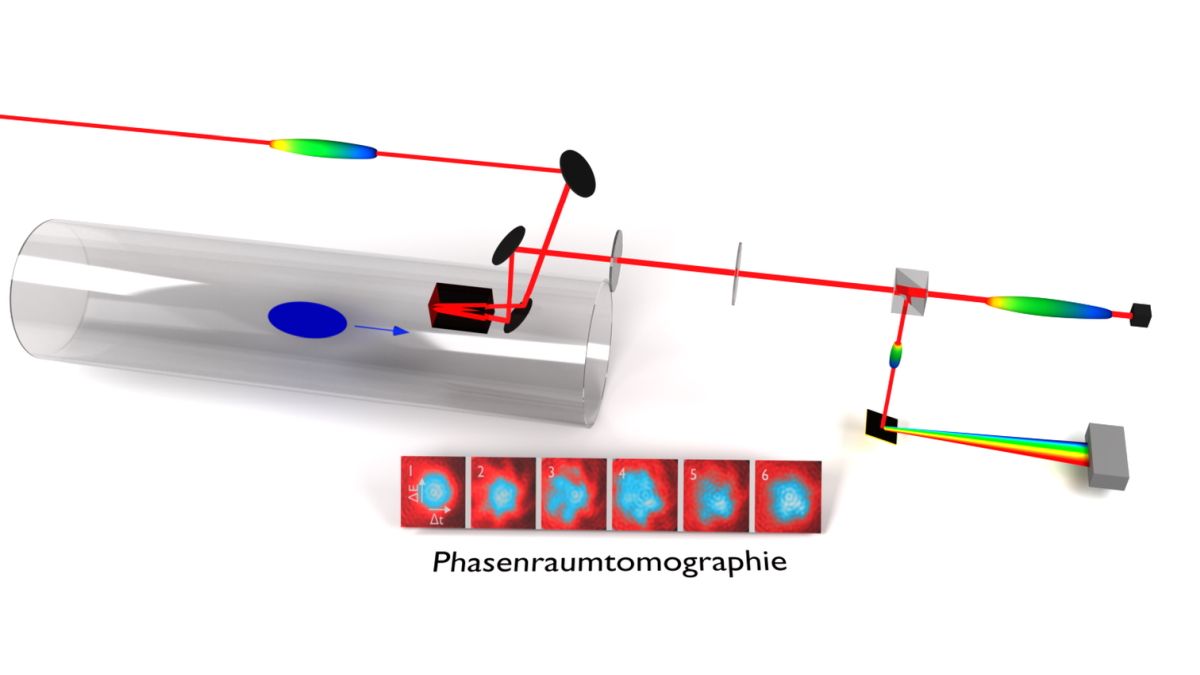Filming of Pulsed Particle Beam Dynamics
Experimental setup: By superimposing the electric nearfield of a relativistic electron bunch on laser pulses in an electro-optical crystal, tomograms of the phase space density are measured. (Image: Stefan Funkner, KIT)
Storage rings as light sources of broadband synchrotron radiation have become an indispensable part of today's research. With the Karlsruhe Research Accelerator (KARA), the Karlsruhe Institute of Technology (KIT) operates such a storage ring in which microstructured electron bunches circulate and can be studied. Researchers from KIT's Institute for Beam Physics and Technology (IBPT) have compressed stored electron bunches very strongly and thus temporarily put them into an unstable state, the so-called microbunching instability. In this process, the electron bunches emit intense flashes of light.
Reconstruction contributes to a better understanding of electron dynamics
The investigation of these non-equilibrium states and, in particular, the control of the intense energy release are research goals at KARA. "With the fast diagnostics developed for this purpose at KIT, we have now succeeded in reconstructing so-called phase space densities during the microbunching instability," says Stefan Funkner of IBPT. The phase space density describes the location and velocity of the electrons over time. In their measurements, the researchers determine the charge profile of an electron bunch during each orbit in the storage ring, allowing them to reconstruct the phase space densities from the data. "This will eventually allow us to make a kind of movie of the evolution of the phase space density," Funkner added.
By gaining a greater understanding of electron dynamics, the results can contribute to the design of future intense radiation sources.
jho, 04.05.2023

